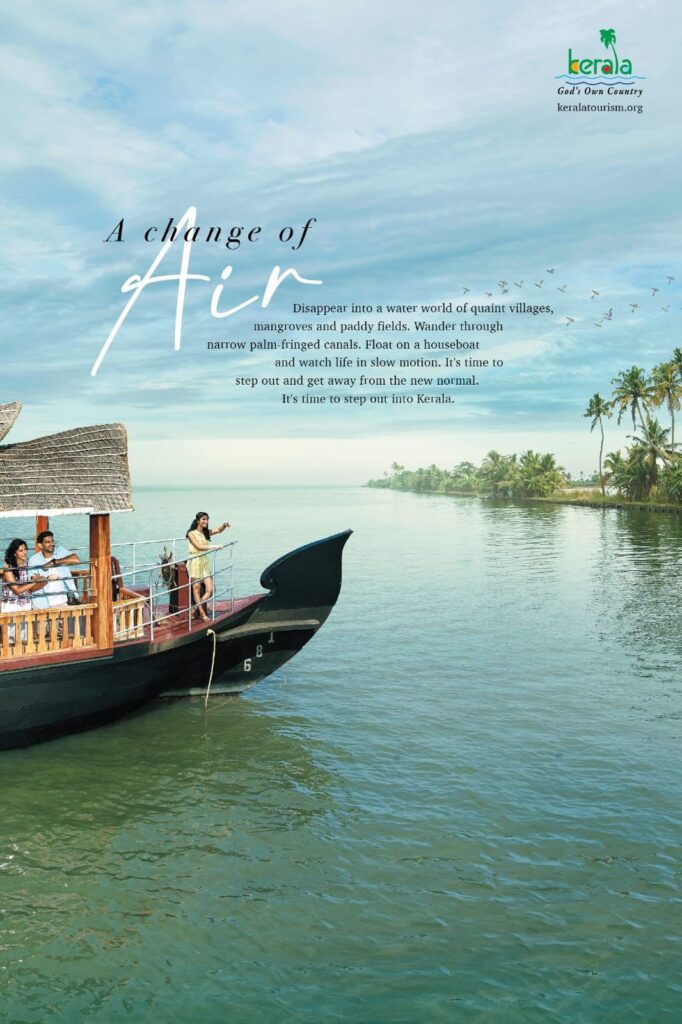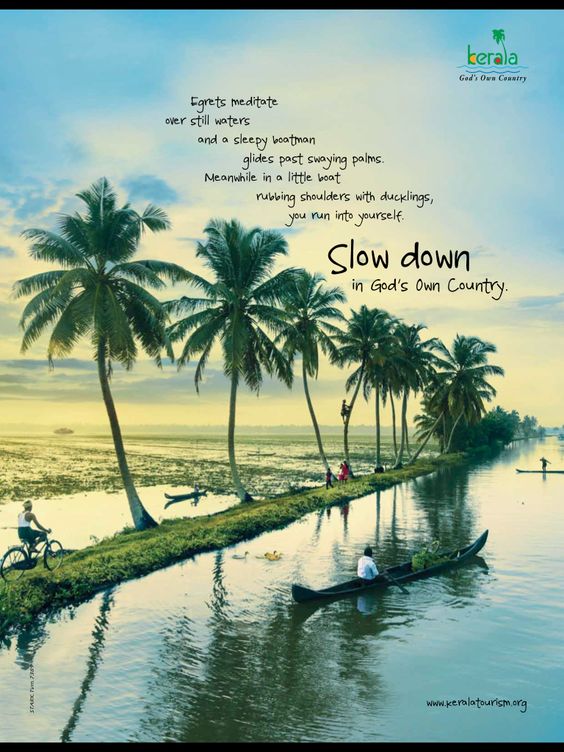Kerala Tourism – Cohesive Marketing Strategy

Tourism in Kerala has grown in popularity, the state tourist board has maintained a steady and systematic marketing strategy and launched strategically timed campaigns.
Legend has it that Godavarma Raja, the Prince Consort of Travancore, took the initial steps towards promoting Kerala as a tourist destination. To promote the Travancore Kingdom’s most important tourist destinations, he established Kerala Tours Ltd.
For approximately two decades after India’s independence in 1947, the state of Kerala lacked an effective tourism marketing missionary. It was in the 1960s that hippie culture first appeared on Kovalam Beach, thanks to the efforts of Kerala Tours Limited (KTL) and Thomas Cook to promote the beautiful scenery of Kovalam in western nations.
Hence, there was a big flood of visitors, which prompted the Kerala Government to prioritise the tourism business and to promote each hidden gem more widely. Because of KTL’s legal problems, the government of Kerala established Kerala Tourism Development Corporation (KTDC) in 1966.
The government of Kerala recognised the vital role that tourism played in boosting the state’s economy and legally designated it as an industry in 1986.
The myths of Manu, the first human being and progenitor of mankind, and Matsya Avatar, the earliest incarnation of Lord Vishnu, both take place in Kerala, solidifying the region’s reputation as the Sacred Land. In 1739, Marthanda Varma, the King of Travancore (now modern-day Kerala), chose to devote his land and kingdom to the ruling deity, Lord Vishnu and stated that he would henceforth serve solely as a caretaker, elevating the prominence of the Hindu god even higher.
The main goal of the KTDC was to draw attention to this South Indian treasure. Goa and the Golden Triangle (Delhi, Jaipur, and Agra) were the most popular places to visit in India.
God’s Own Country
The Mudra Communications team, Harshan and Walter Mendez came up with the slogan “God’s Own Country” to promote Kerala as a tourist destination. As far as destination marketing goes, Kerala has done a fantastic job, and this tagline has become very well-known and effective. (To know more about the making of the ads – https://onlykutts.com/index.php/2021/07/06/kerala-gods-own-country/)
Incredible natural beauty can be found all over Kerala, from the state’s towering mountains that seem to reach for the sky to the sun-drenched beaches that are constantly being washed clean by the waves, and from the dense, mysterious forests that are home to a wide variety of animals to the tranquil backwaters that wind their way to the ocean.
The campaign gained credibility by drawing attention to the past while also highlighting the present. Through tourism promotion, the state of Kerala successfully integrated its visitors into the local culture and lifestyle. All of a sudden, everyone wished they could say they had experienced everything Kerala has to offer. The greater the turnout, the more individuals who attended felt compelled to tell their circle of acquaintances about it. Ads eventually became a point of pride for the company. Most travellers returned home feeling accomplished and inspired, and sustainability frequently plays a role in shaping these experiences.
A constant and well-structured marketing plan and well-crafted, timely campaigns by the state tourism board have contributed to Kerala’s meteoric rise to prominence since tourism began in the state, highlighting not only the state’s natural splendor and diversity but also its role as a pioneer in eco-tourism.
The Core
Kerala’s many landscapes and attractions—from its backwaters and houseboats to its mountains, renowned and unknown beaches, and ancient temples and churches—offer visitors the chance to relax in nature without sacrificing any of the state’s cultural attractions. Culture, cuisine, and, most notably, Ayurveda have all contributed to the uniqueness that is Kerala



Target audience
The state successfully enlisted the help and enthusiasm of all the organisations and individuals with a vested interest in the tourism business, including the bureaucracy, all government departments, hotels, travel brokers, and others.
European and American businesses and consumers alike were targeted.
Cohesive marketing strategy
Kerala Tourism has been present at almost all major international tourist expos. They eventually got the majority of travel agencies to promote Kerala. They also ensured that their message was visible at all the main airports across the globe.
Kerala Tourism has also made it easy for a travel agent by publishing a wealth of resources. This eased their minds, leading to more positive feedback. (Keep in mind that this was still the stone age, internet-wise.) They focused a lot of their efforts on making sure that the public’s impression matched the truth, which is crucial in promoting tourist destinations.
Communication
Their ad campaign was/is brilliant, with images that caught people’s attention in print, online, and broadcast media.
It helped that Kerala was named by National Geographic as one of the 50 best places to visit in the world and as one of the top 10 paradises on Earth. This was cemented by a glowing review in Lonely Planet.
Then the media took over, particularly television programmes and blogs, and the use of influencer marketing aided in the swarm of visitors to the “God’s Own Country.”
The tourist boards of many other states attempted to follow this model, with mixed results.
Kerala’s unique approach to tourism is a success story, and the fact that the number of people who visit the state every year has grown from 500,000 to 20,000,000 shows how well Kerala Tourism has been marketed and promoted. Revenues from tourism grew from INR 13,000 cr in 2008 to a whooping INR 45,000 cr in 2019 (though it dropped due to COVID subsequently)



